Peter Lobner
Background
On 24 January 2016, I posted the article, “Where in the Periodic Table Will We Put Element 119?”, which reviews the development of the modern periodic table of chemical elements since it was first formulated in 1869 by Russian chemist Dimitri Mendeleev, through the completion of Period 7 with the naming element 118 in 2016. You can read this post here:
https://lynceans.org/all-posts/where-in-the-periodic-table-will-we-put-element-119/
2019 is the 150thanniversary of Dimitri Mendeleev’s periodic table of elements. To commemorate this anniversary, the United Nations General Assembly and the United Nations Educational, Scientific and Cultural organization (UNESCO) have proclaimed 2019 as the International Year of the Periodic Table of Chemical Elements (IYPT). You’ll find more information on the IYPT here:
A brief animated “visualization” entitled “Setting the Table,”created by J. Yeston, N. Desai and E. Wang, provides a good overview of the history and configuration of the periodic table. Check it out here:
http://vis.sciencemag.org/periodic-table/
The prospects for extending the periodic table beyond element 118 (into a new Period 8) is discussed in a short 2018 video from Science Magazine entitled “Where does the periodic table end?,”which you can view here:
The next phase in the hunt for new superheavy elements is about to start in Russia
Flerov Laboratory of Nuclear Reactions (FLNR) Joint Institute for Nuclear Research (JINR) in Dubna is the leading laboratory in Russia, and perhaps the world, in the search for superheavy elements. The FLNR website is here:
http://flerovlab.jinr.ru/flnr/she_factory_no.html
FLNR is the home of several accelerators and other experimental setups for nuclear research, including the U400 accelerator, which has been the laboratory’s basic tool for the synthesis of new elements since being placed in operation in 1979. You can take a virtual tour of U400 on the FLNR website.
On 30 May 2012 the International Union of Pure and Applied Chemistry (IUPAC) honored the work done by FLNR when it approved the name Flerovium (Fl) for superheavy element 114.
Yuri Oganessian, the Scientific Leader of FLNR, has contributed greatly to extending the periodic table through the synthesis of new superheavy elements. On 30 November 2016, IUPAC recognized his personal contributions by naming superheavy element 118 after him: Oganesson (Og).
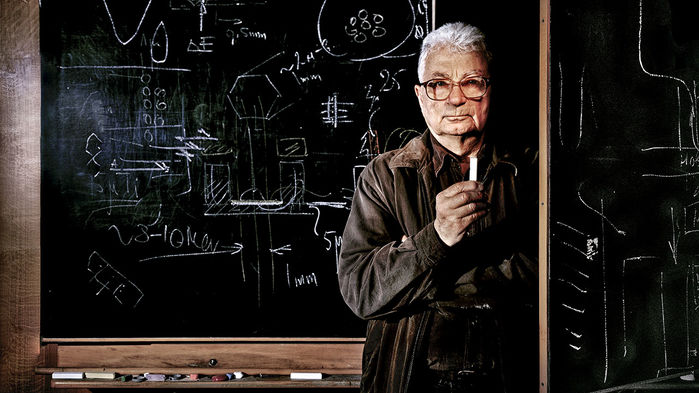
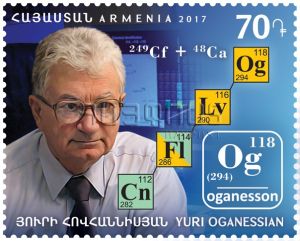
FLNR has built a new $60 million accelerator facility, dubbed the Superheavy Element Factory (SHEF), which is expected to be capable of synthesizing elements beyond 118. The SHEF building and the DC-280 cyclotron that will be used to synthesize superheavy elements are shown in the photos below.
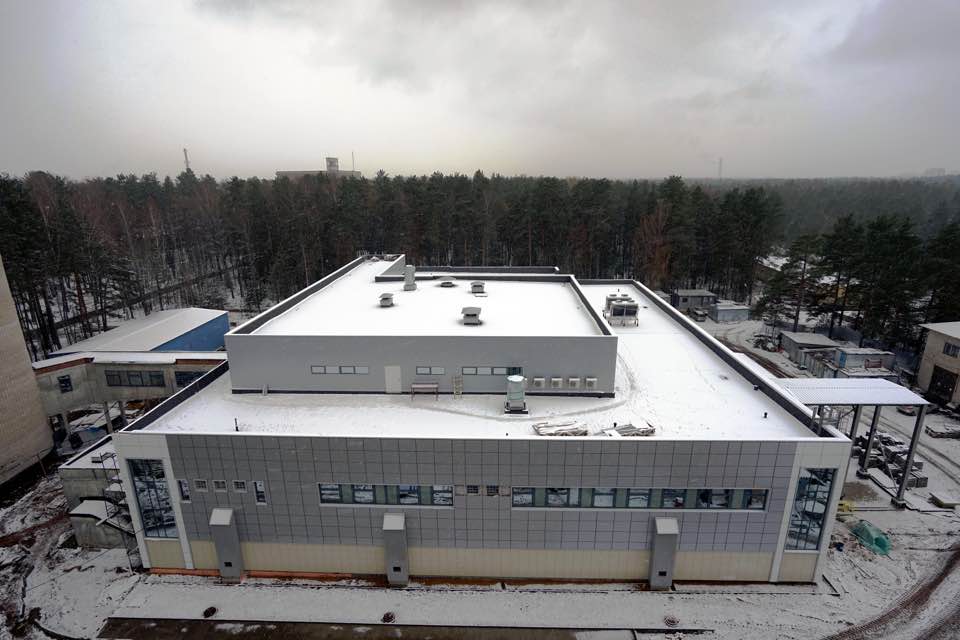
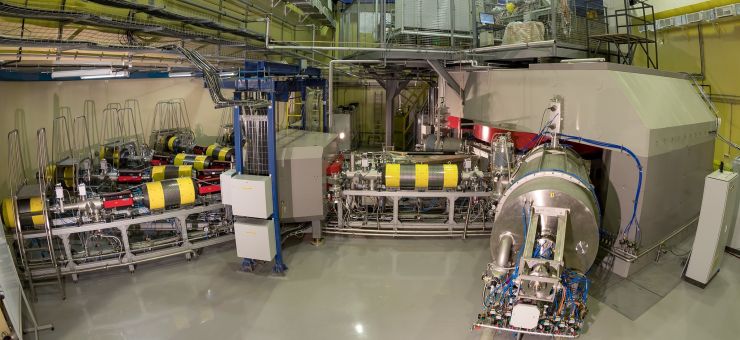
The 2016 paper, “Status and perspectives of the Dubna superheavy element factory,”by S. Dmitriev, M. Itkis and Y. Oganessian, presents an overview of the DC-280 cyclotron design, including the following diagram showing the general arrangement of the major components.
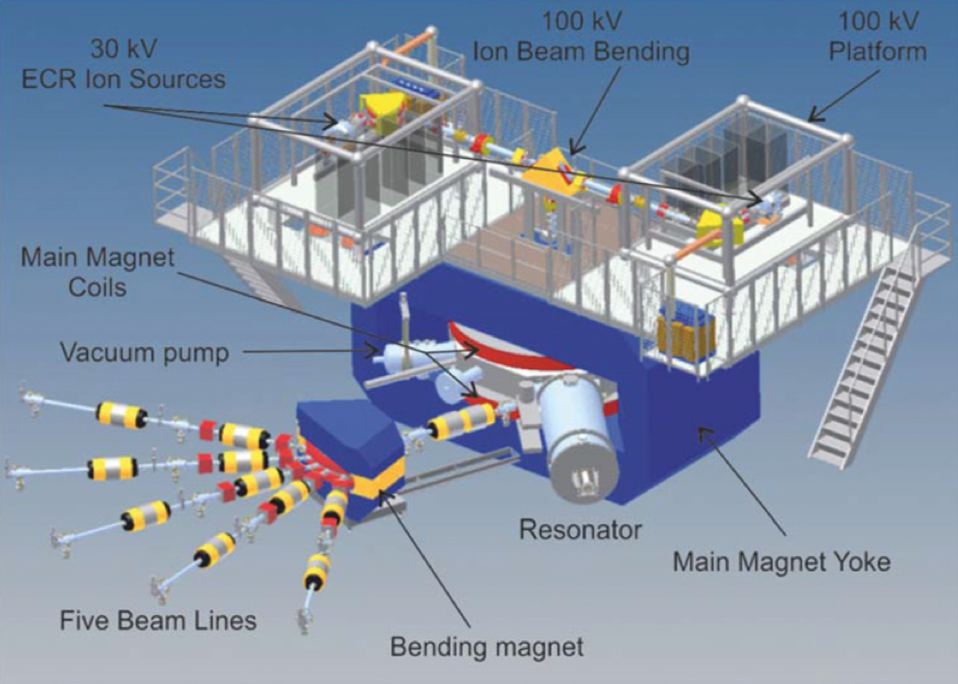
You can read this 2016 paper here:
http://inspirehep.net/record/1502737/files/epjconf-NS160-08001.pdf
For insights into the processes for synthesizing superheavy elements, I recommend that you view the following March 2018 video in which FLNR Director Sergey Dmitriev describes the design of SHEF and the planned process of synthesizing superheavy elements 119 and 120. This is a rather long (23 min) video, but I think it will be worth your time.
https://www.youtube.com/watch?v=5LIohLbjqyM
On 26 December 2018, the DC-280 cyclotron produced its first beam of accelerated heavy ions. The hunt for new superheavy elements using DC-280 is scheduled to begin in the spring of 2019.
A good overview of FLNR, as it prepares to put its Superheavy Element Factory into operation, is available in the article by Sam Kean, entitled “A storied Russian lab is trying to push the periodic table past its limits—and uncover exotic new elements,” which was posted on 30 January 2019 on the Science Magazine website. You’ll find this article at the following link:
The next few years may yield exciting new discoveries of the first members of Period 8 of the periodic table. I think Dimitri Mendeleev would be impressed.
Additional reading:
- H. Kragh, “The Search for Superheavy Elements: Historical and Philosophical Perspectives,” Niels Bohr Institute https://arxiv.org/pdf/1708.04064.pdf
- V. Utyonkov, et al., “The Discovery of Elements 113 – 118,” Nobel Symposium on the Chemistry and Physics of Heavy and Super Heavy Elements, 29 May – 3 June 2016 https://pls.llnl.gov/content/assets/docs/research-and-development/nuclear-science/NS160_final.pdf
- M. Stoyer, “Super-Heavy Element and Other Exotic Nuclei Research at LLNL,” October 2015 https://www.researchgate.net/publication/270515886_Super-Heavy_Element_and_Other_Exotic_Nuclei_Research_at_LLNL
- Y. Oganessian, “Discovery of the Island of Stability for Superheavy Elements,” Proceedings of IPAC2017 http://accelconf.web.cern.ch/AccelConf/ipac2017/papers/fryaa1.pdf
- C. Moskowitz, “Superheavy Element 117 Points to Fabled ‘Island of Stability’ on Periodic Table,” Scientific American, 7 May 2014 https://www.scientificamerican.com/article/superheavy-element-117-island-of-stability/
- “Extended Periodic Table,” Wikipedia https://ipfs.io/ipfs/QmXoypizjW3WknFiJnKLwHCnL72vedxjQkDDP1mXWo6uco/wiki/Extended_periodic_table.html


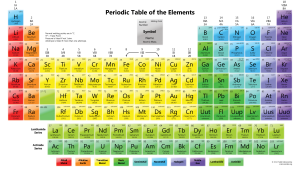

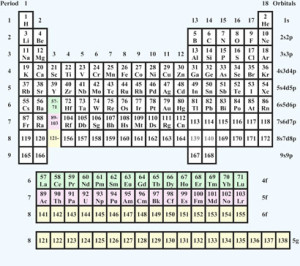
 The 1885 periodic table. Source: University of St. Andrews
The 1885 periodic table. Source: University of St. Andrews